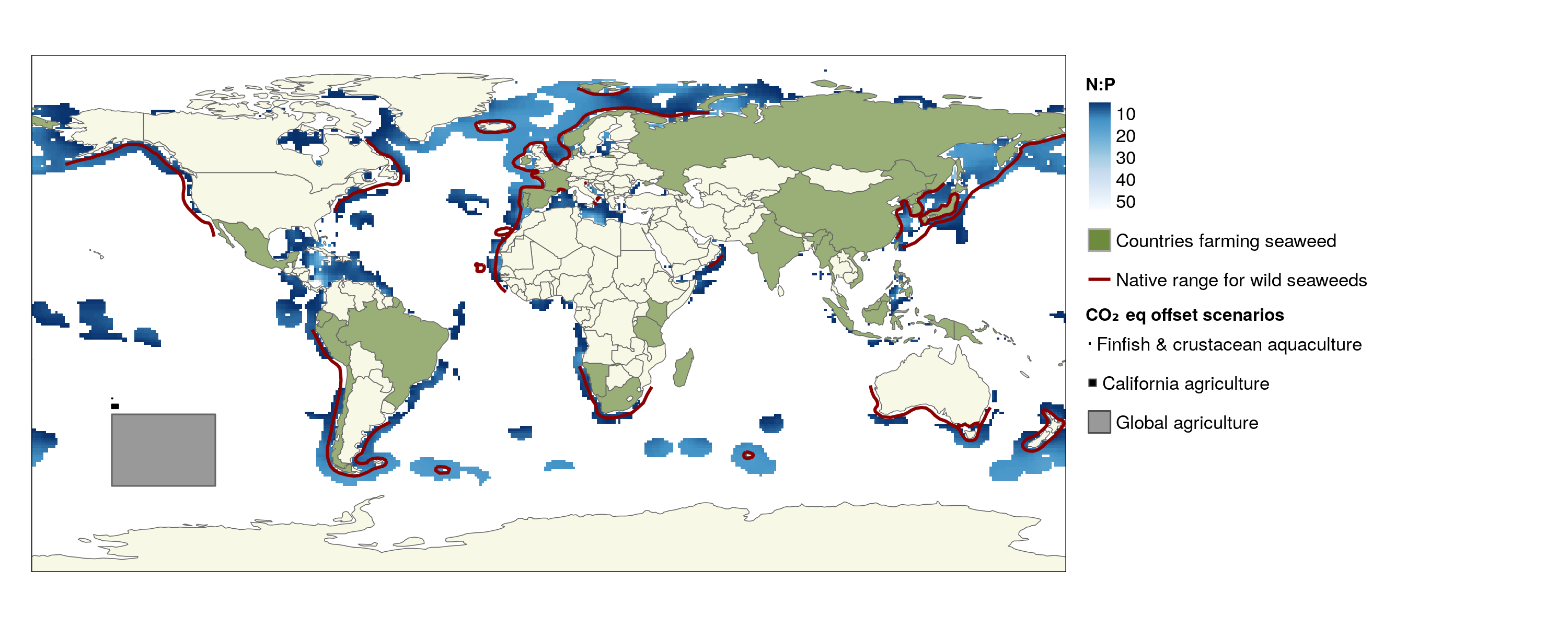
Blue Growth Potential to Mitigate Climate Change through Seaweed Offsetting
Abstract
Carbon offsetting—receiving credit for reducing, avoiding, or sequestering carbon—has become part of the portfolio of solutions to mitigate carbon emissions, and thus climate change, through policy and voluntary markets, primarily by land-based re- or afforestation and preservation. However, land is limiting, creating interest in a rapidly growing aquatic farming sector of seaweed aquaculture. Synthesizing data from scientific literature, we assess the extent and cost of scaling seaweed aquaculture to provide sufficient CO2eq sequestration for several climate change mitigation scenarios, with a focus on the food sector—a major source of greenhouse gases. Given known ecological constraints (nutrients and temperature), we found a substantial suitable area (ca. 48 million km2) for seaweed farming, which is largely unfarmed. Within its own industry, seaweed could create a carbon-neutral aquaculture sector with just 14% (mean = 25%) of current seaweed production (0.001% of suitable area). At a much larger scale, we find seaweed culturing extremely unlikely to offset global agriculture, in part due to production growth and cost constraints. Yet offsetting agriculture appears more feasible at a regional level, especially areas with strong climate policy, such as California (0.065% of suitable area). Importantly, seaweed farming can provide other benefits to coastlines affected by eutrophic, hypoxic, and/or acidic conditions, creating opportunities for seaweed farming to act as “charismatic carbon” that serves multiple purposes. Seaweed offsetting is not the sole solution to climate change, but it provides an invaluable new tool for a more sustainable future.